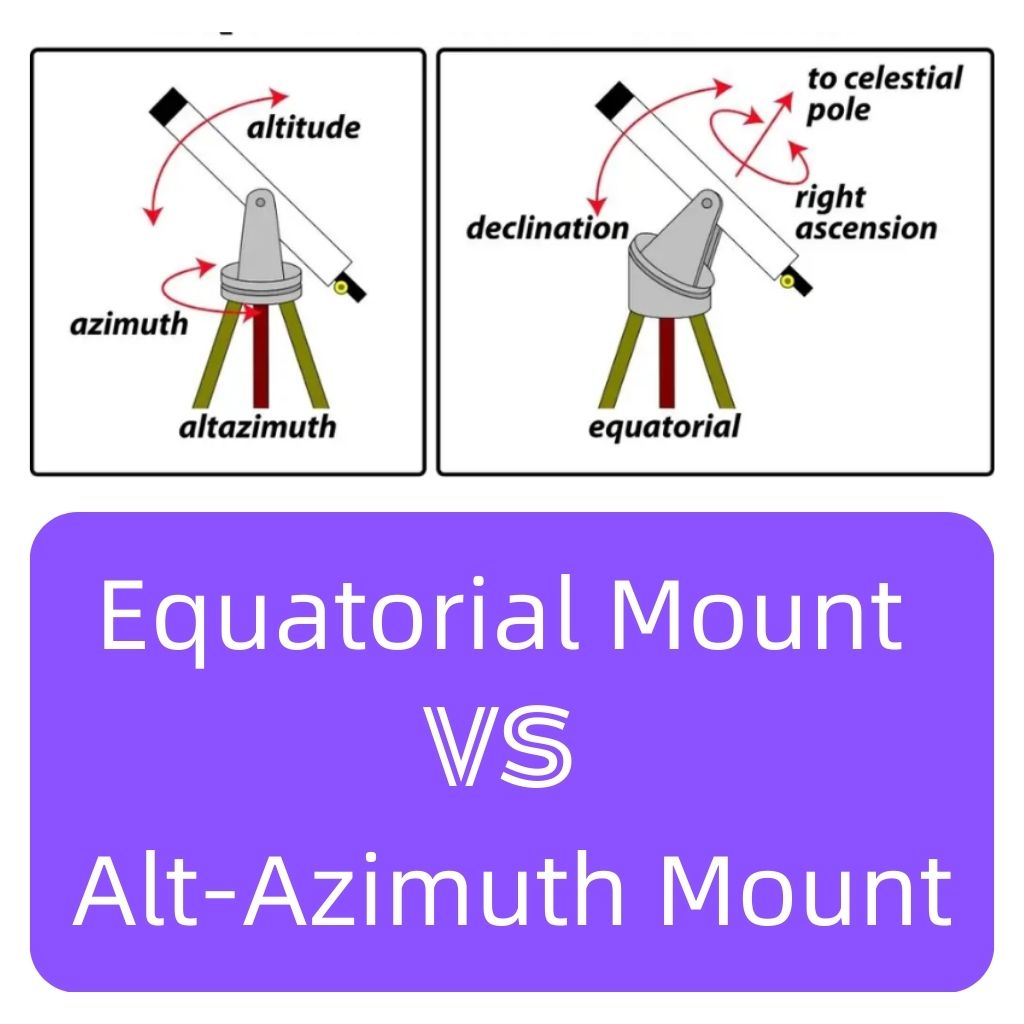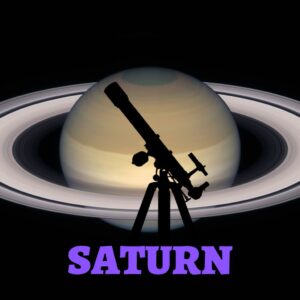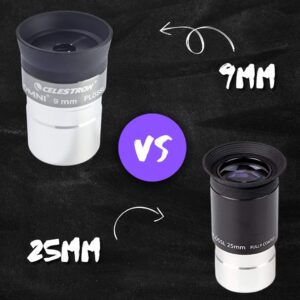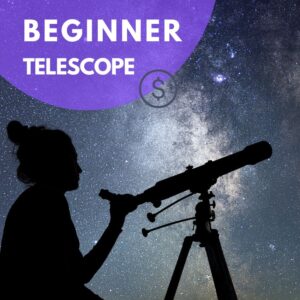This site contains affiliate links to products. I may receive a commission for purchases made through these links.
If you want to buy your first telescope, you have to decide what type of mount you want. The mount is the most important factor of the telescope assembly. There are two main types of telescope mounts: the Alt-Azimuth mount and the Equatorial mount.
The best type of telescope mount to start with is the Alt-Azimuth mount because it is easy to use and set up. Equatorial mounts are more advanced mounts that require polar alignment and are tricky to set up for a beginner.
Alt-Azimuth mounts are also a cheaper option compared to Equatorial mounts. However, Equatorial mounts are necessary to do astrophotography.
But let’s take a closer look at Alt-Azimuth and Equatorial mounts to see where each of them excels and the advantages and disadvantages so you can decide for yourself.
What is a telescope mount?
The telescope mount is the most crucial part of the whole telescope setup. What type of telescope mount you choose will determine what you can do with your telescope.
The telescope mount sits on top of the tripod. Remember, the tripod is not the mount. But it is also important because it has to be sturdy to have the best stargazing experience, whether you use an Alt-Azimuth mount or equatorial mount, so keep this in mind.
Avoid flimsy aluminum or wooden tripods, and look for a sturdy steel legs tripod because it can ruin your experience even if you have the best telescope and mount on it. It needs to be stable to avoid vibrations and the shakiness of the telescope.
There is also a telescope mount that doesn’t use a tripod called the Dobsonian mount, but I will discuss it later.
What is an Alt-Azimuth mount?
The Alt-Azimuth (AZ) mount is the simplest mount for the telescope. Alt means altitude, and Azimuth is, of course, azimuth. The name tells you how the mount moves.
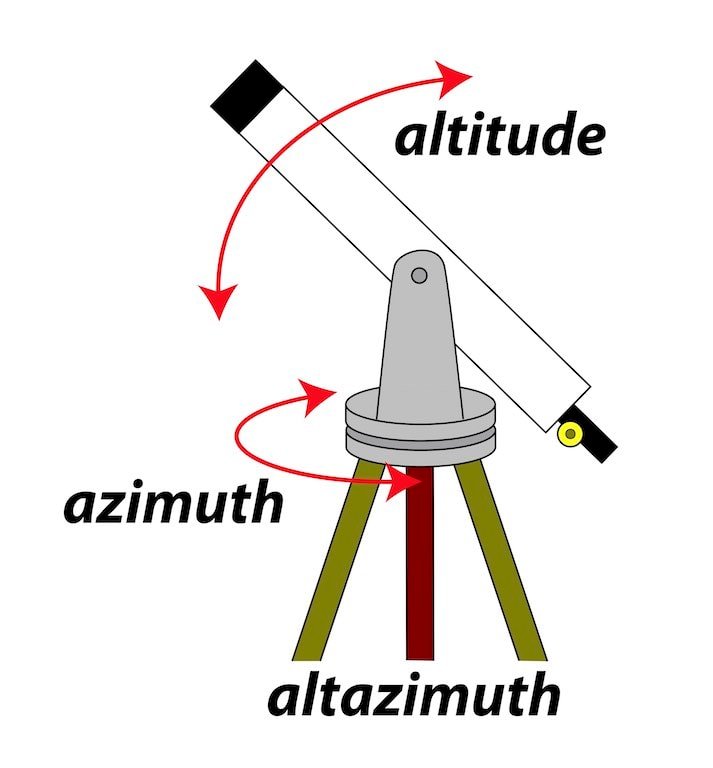
It uses simple movements following Alt-Azimuth grid coordinates; up/down is altitude, and left/right is azimuth. The center of this grid is called Zenith. The mount Azimuth axis is at a right angle to the ground.
The Alt-Azimuth mount doesn’t need any polar alignment because of this simple design. You point it wherever you want and can start observing the sky.
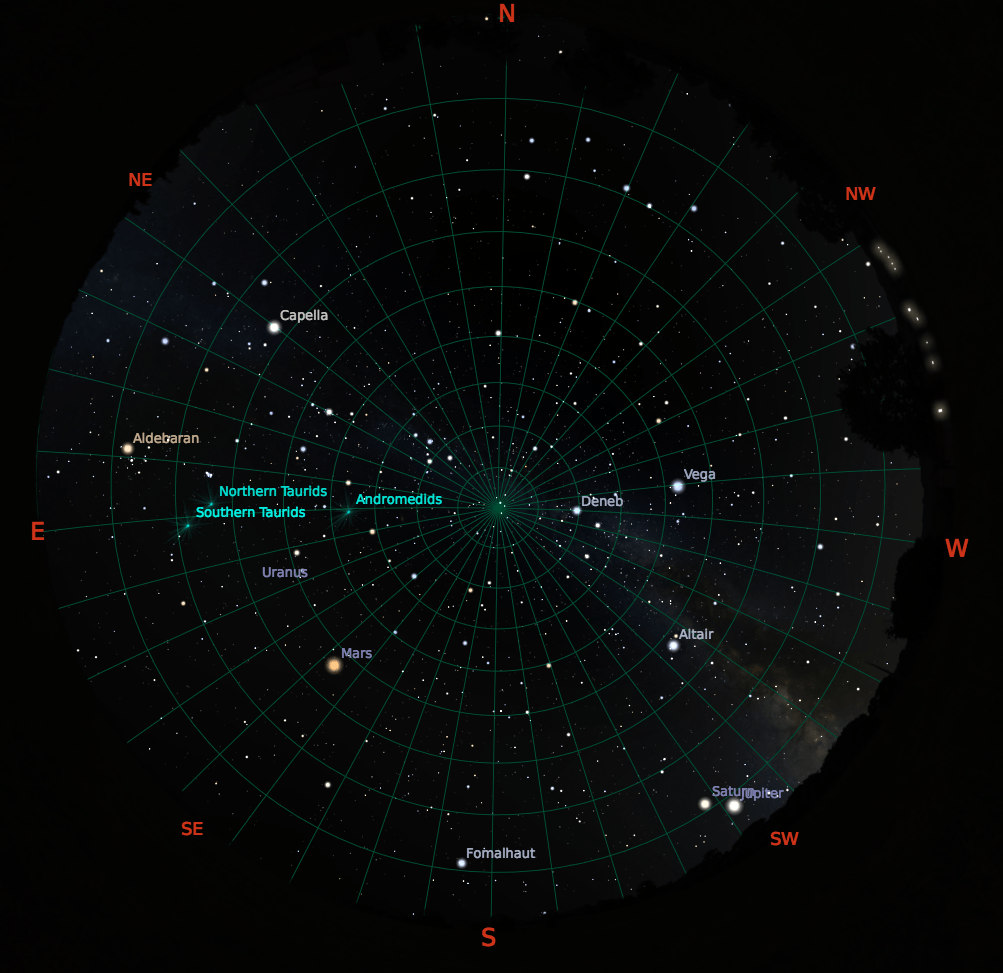
Alt-Azimuth mounts come in different shapes and sizes and are usually sold with cheap beginner scopes. But that doesn’t mean that they are made only for beginners. Almost all big telescopes in observatories are placed on Alt-azimuth mounts.
You may also like: Why Are Observatories Built On Mountaintops?
Alt-Azimuth mount advantages
- Great for beginners
- Easy to set up
- Easy to use
- Cheaper than an equatorial mount
- Can handle heavier telescopes(Dobsonian mount)
- Sufficient for planetary and moon imaging
- Doesn’t need to be polar aligned
Alt-Azimuth mount disadvantages
- Can not be used for long-exposure deep-sky astrophotography
- Harder to keep the object in the field of view
- Field rotation
What is an equatorial mount?
The equatorial mounts (EQ), also called the German Equatorial mounts (GEM), follow the equatorial coordinates on the night sky. The sky is rotating around the star Polaris – North celestial pole, the center of the equatorial grid.
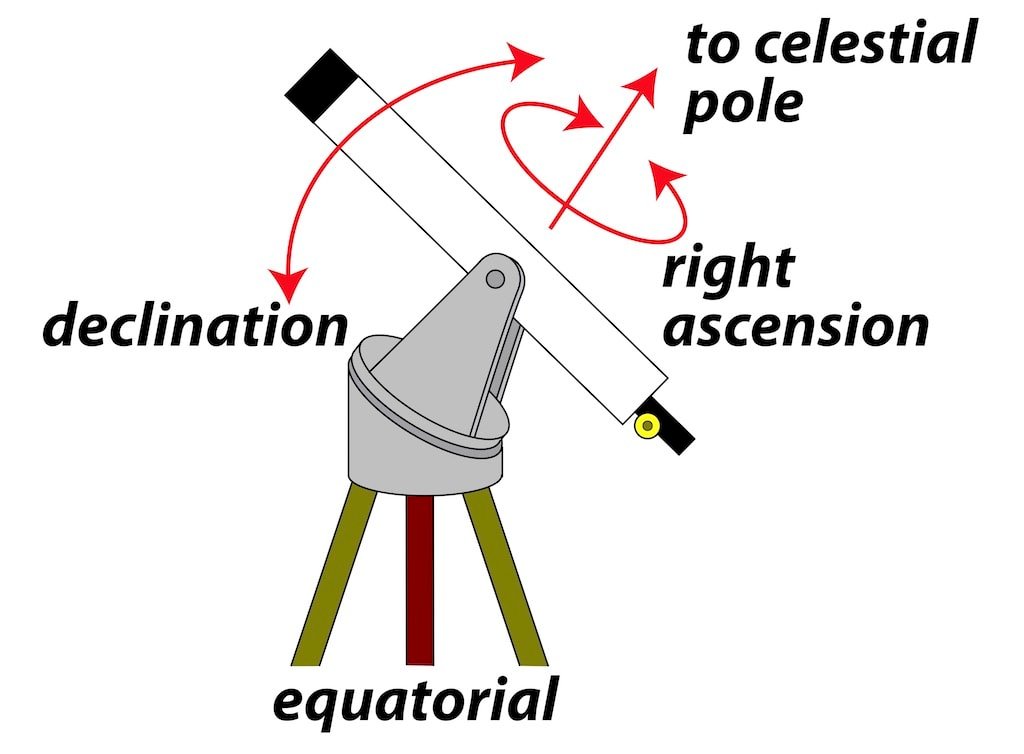
The equatorial mount works on two axes. RA – right ascension axis and DEC – declination axis. The RA axis has to be aligned and pointed to the North celestial pole, called polar alignment.
When the polar alignment is spot on, and you point the telescope to a certain object, all you need to do to track this object across the sky is to move the telescope only around the RA axis.
As you can see, this is different from the Alt-Azimuth mount, where you must always adjust the telescope in altitude and azimuth.
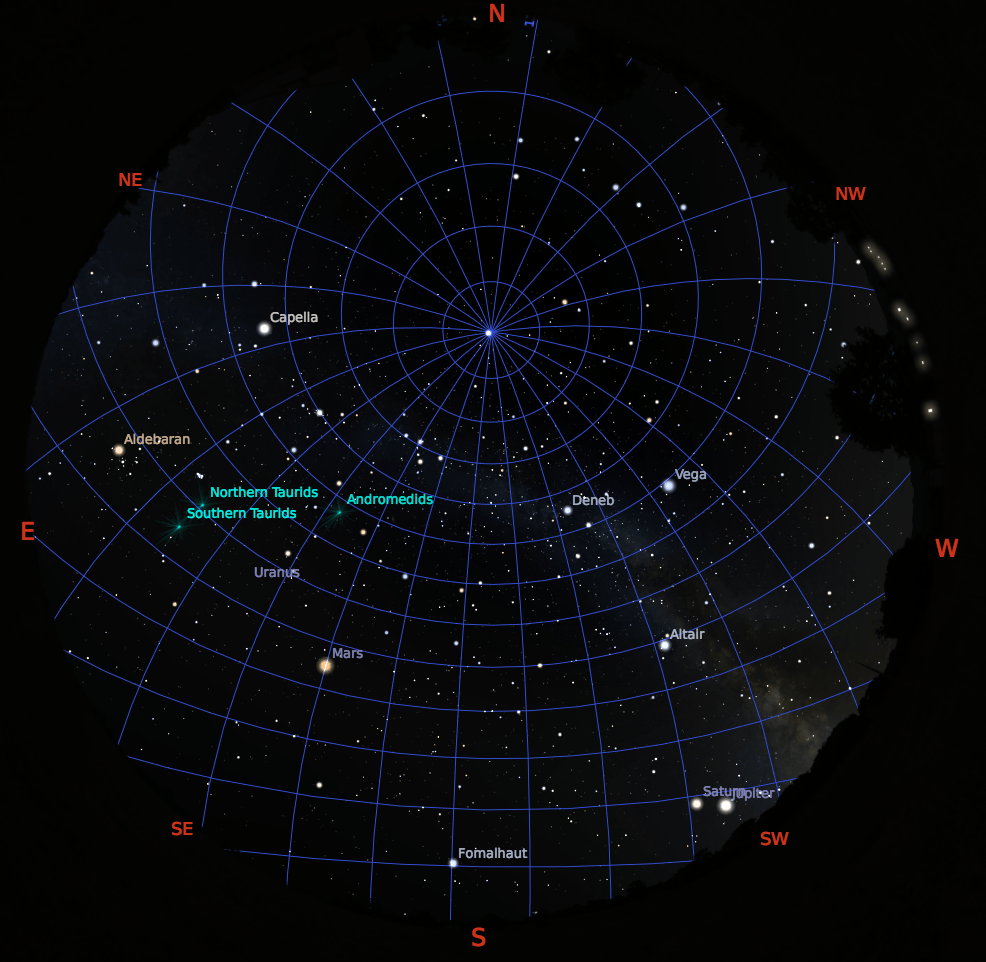
It sounds complicated, but it is relatively easy to set up. Following the equatorial grid has many advantages over the Alt-azimuth mount, which I will list in the next parts of this article.
More expensive equatorial mounts are equipped with a polar scope that is very helpful during the polar alignment. The polar alignment doesn’t have to be super spot on when you do visual astronomy.
But for astrophotography, getting the best polar alignment possible is critical if you want to capture long exposure images with no star trails.
Equatorial mount advantages
- Long exposure photography
- Easy to track the object and keep it in the field of view
- Professional look
Equatorial mount disadvantages
- Needs to be polar aligned
- Complicated setup for a beginner
- Needs to be balanced using counterweights
- Can’t carry big heavy telescopes
What is the difference between the Alt-Azimuth mount and the equatorial mount?
There are some major differences between an Alt-Azimuth mount and an EQ mount.
Movement
Alt-Azimuth mounts are designed to move in two different axes. They can move up and down and right and left. This mimics the motion of a celestial object across the night sky. This makes it easy to track objects manually.
On the other hand, the equatorial mounts are designed to move along the right ascension axis. This is the axis of the Earth’s rotation. That makes them perfect for tracking objects that move on a single axis.
Equatorial mounts can easily keep up with the motion. Some examples of these objects include stars or comets.
Eyepiece position
For Alt-Azimuth mounts, your eyepiece remains fixed in place relative to its position on the ground. You must move the telescope to track the target object across the night sky.
Now, this can be rather painstaking for amateur astronomers. That’s because you must constantly adjust, move the optical tube, and refocus it.
It will be especially problematic when the objects are on the horizon or the polar axis. That’s when you will need to adjust the tube across both the altitude axis and the horizontal axis. That’s the only way to ensure your telescope is properly aligned for accurate tracking.
However, with the equatorial mounts, your eyepiece is fixed relative to the sky. Since these telescopes are aligned according to the right ascension axis, they follow Earth’s rotation. That makes it especially helpful when tracking objects, including faint objects.
Visual tracking
Visual astronomy is easier on Alt-az mount. You can easily understand its movement because it only moves in two axes. That means you can quickly track objects across the sky without much skill. This type of mount is operated more intuitively.
However, with equatorial mounts, you need more skills to track objects. Their movements are rather complex. You will need to adjust for the right ascension axis and the declination axis. That’s when you can track your object during visual observation.
Stability
Alt-Azimuth mounts are generally less stable than their equatorial counterparts. That’s because they use a counterweight shaft to try and maintain stability. However, this counterweight is only as good as the astronomer’s ability to balance it.
They can be easily affected by the telescope’s weight or even environmental factors like wind or rain. That makes alt-azimuth mounts less stable.
German equatorial mounts tend to be more stable. Their counterweight system works per the Earth’s rotation. That means they are continuously distributing the weight of the telescope evenly across the mounts. This gives them higher stability.
Alt-Azimuth mount for astrophotography
As I said, the Alt-Azimuth mount can’t be used for long-exposure astrophotography. The main problem is field rotation. Because the skies are rotating around the North celestial pole, following the object with the Alt-Azimuth causes the object’s rotation in the field of view.
This issue is noticeable after doing more than 15-30s exposures with an Alt-Azimuth mount because you get star trails around the edges and blurry result objects.
However, it can be done if you limit the exposure to, at most, the 30s. I have done it, and you can read more about AZ astrophotography in my article Budget Astrophotography with DSLR Camera.
On the other hand, you can do planetary or moon astrophotography with no problem because you don’t need to do long exposures here. All you need to do is attach a simple webcam or a smartphone to your telescope and capture a short video or make images.
Equatorial mount for astrophotography
The equatorial mount is made for astrophotography. If your main goal with the telescope is to do astrophotography, you must buy a german equatorial mount.
With the equatorial mount, you can do long exposures lasting for a few minutes with no field rotation or star trail when properly polar aligned. But I must say one important thing – it would help if you had a motorized equatorial mount to track the object and do long-exposure astrophotography.
There is no way you can do it with the manual mount. It also applies to Alt-Azimuth mounts. Astrophotography needs a computerized mount; in this case, you have to do not only a polar alignment but star alignment with the mount.
Astrophotography is a complicated hobby and a bottomless money pit, so you have been warned.
Alt-Azimuth vs. equatorial mount – Which one should you choose?
A good telescope mount depends on your needs and preferences. Choosing the suitable one would depend on what deep sky objects you want to view.
Alt-Azimuth mounts are great for beginners. They are simple to use and relatively cheaper than equatorial mounts. However, they are not very stable for astrophotography.
On the other hand, equatorial mounts are more stable and generally computerized. That means they can automatically track the objects across the night sky. They are almost a need for people who are into professional astrophotography.
Two other mount alternatives
There are some other mounts that you can consider besides the Equatorial (eq) mounts and the alt-az mounts.
Dobsonian mount
If we are talking about Alt-Azimuth and equatorial mounts, I must also mention the Dobsonian mounts. The Dobsonian mount is an Alt-Azimuth mount without the tripod.
The mount is a base on the ground capable of holding big Newtonian telescopes. Dobsonian telescopes are the number one telescopes recommended for beginners starting with astronomy.
The advantages are the ease of use because of the Alt-Azimut design and affordable price. You can buy quite a big aperture telescope on Dobsonian mount and not break the bank.
An excellent example is the Orion SkyQuest XT8 Dobsonian telescope. With this telescope, you can see almost everything in the night sky for a great price.
Hybrid telescope mounts
And to make things more confusing for you, there are also telescope mounts that I call hybrid mounts. They are a hybrid of the alt-azimuth and equatorial mount.
These mounts work primarily as alt-azimuth mounts. You can add a special equatorial wedge to them and transform an alt-azimuth mount to a german equatorial mount anytime.
The well-known hybrid mounts are the Celestron Nextar series with Schmidt Cassegrain telescopes. An example is the Celestron Nexstar 8SE, a great telescope.
This is a smart option for beginners because if you are unsure you want to start with long-exposure astrophotography, you can have an amazing Schmidt Cassegrain telescope on an easy-to-use Alt-Azimuth mount.
Later, when you try astrophotography, you can add an equatorial wedge to it—no need to buy a new telescope on a German equatorial mount.
You may also like: Celestron NexStar 8SE Review (Planetary Telescope)
Takeaway – The right type of mount depends on your needs
To sum it up and make the decision easy, here is my recommendation.
If you are a beginner looking for the first telescope and your main interest is visual astronomy, go for the Alt-Azimuth mount, either manual or computerized, depending on your budget.
The best option here is to buy a Dobsonian telescope because it is the best telescope for the money.
On the other hand, if your primary focus and interest are in astrophotography, you need a telescope on a computerized equatorial mount.
I hope this article helps you choose between the Alt-Azimuth mount and the Equatorial mount to make a decision that suits your needs.
Join other astronomy enthusiasts by subscribing to our newsletter. Dive into a world of fascinating celestial events, in-depth space analysis, and special offers tailored just for you. Become part of our cosmic community today!
You may also like:

